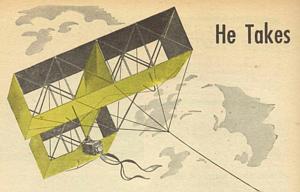
Two of the many aerial pictures that Crowell has taken with homemade cameras. The use of aluminum permits making a cut-film camera weighing 13 oz.
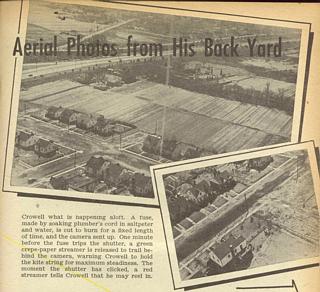

Two of the many aerial pictures that Crowell has taken with homemade cameras. The use of aluminum permits making a cut-film camera weighing 13 oz. |

|
THE old stunt of using a kite to fly a camera aloft has been developed to a fine art by Frank S. Crowell, of St. Albans, N. Y. His homemade aluminum cameras, fitted with fuse-operated shutters, have flown to a height of 2,000', and Crowell explains that only the hazard of collision with planes has kept him from going higher on days when conditions were favorable for flying kites.
His 13-oz. cameras take 4" by 5" or 2¼" by 3¼" cut film, and the exposure is usually 1/300 or 1/400 sec. at f/16. A camera may be mounted either on the kite or on two aluminum struts 200' below, an arrangement that allows the camera to be reset without landing the kite.
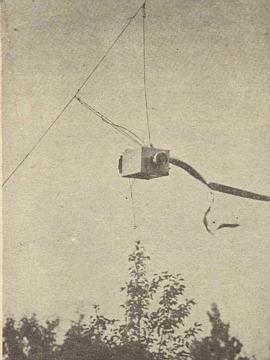
|
Coming down, left, the camera trails the two warning
streamers. In the close-up below, note how the
fuse releases two separate signal strings in order.
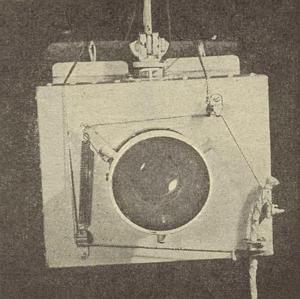
|
An ingenious signaling system tells Crowell what is happening aloft. A fuse, made by soaking plumber's cord in saltpeter and water, is cut to burn for a fixed length of time, and the camera sent up. One minute before the fuse trips the shutter, a green crepe-paper streamer is released to trail behind the camera, warning Crowell to hold the kite string for maximum steadiness. The moment the shutter has clicked, a red streamer tells Crowell that he may reel in.
| Schematic view of the shutter release and signals. A minute after the fuse frees the warning s4reamer, it burns through the spring-loaded shutter string. | Below is one of the geared reels Crowell has made. He has about 12,500' of cord. |
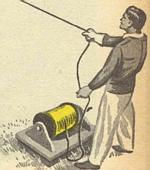
|